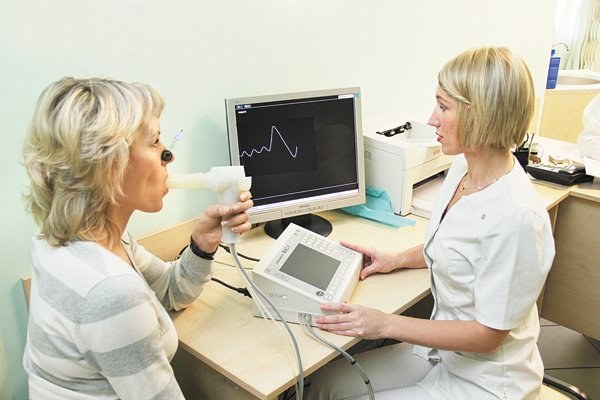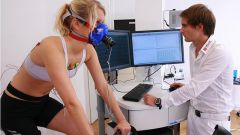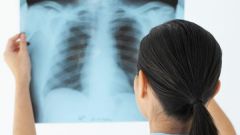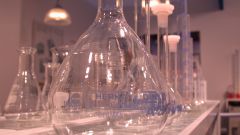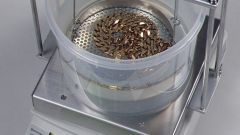Breathing is one of the major physiological processes required for normal metabolism. Compliance of lung capacity normal says about the proper development of the body and good health.
Lung capacity is the sum of three components: respiratory air volume, reserve volume of breath and reserve volume of exhalation. To study this parameter, use the spirometer.
The average vital capacity of lungs in men is equal to 3500-4500 ml, and in women 2700-3500 ml. With age, the lung capacity is gradually reduced by about 25-40%. More lung capacity in athletes, tall people and non-smokers.
In order to accurately calculate the proper amount using a formula that takes into account the age and growth of the person. So, for men lung capacity is equal to the difference of growth multiplied by 0,052 and the age multiplied by 0,029, minus a 3.2. For women the increase is multiplied by 0,049 and age are 0.018 and then the difference is subtracted 3,76.
Lung capacity, a progressive increase with age of the child. On average, higher among boys, high children, giperstenikov.
Vital capacity of lungs in a child of 5 years is 1200 ml in boys and 850 ml in girls. In 10 years, this figure respectively, 2000 ml and 1700 ml, and in 15 years, 3300 ml and 2700 ml.
Formula to calculate lung capacity in children depends on gender and height. For boys 4 to 17 years the rate is equal to growth multiplied by 0,0453, or minus 3.9. For girls the increase is multiplied by 0,0375, and subtract the resulting works of 3.15.
If the child's height more than 165 cm, we can calculate the lung capacity using the formula for adults.
Various sports can have a positive impact on lung capacity. Particularly intensive growth is observed in the first year of active training (200-800 ml). Most of the lung capacity increases during exercise in endurance. Jogging, swimming, skiing maximally affect respiratory function.
In some cases, the athletes recorded the volume of lung capacity of more than 8000 ml in men and more than 5000 ml in women.
Lung capacity in adults
Lung capacity is the sum of three components: respiratory air volume, reserve volume of breath and reserve volume of exhalation. To study this parameter, use the spirometer.
Vital capacity of lungs is about 75% of the total lung volume.The obtained experimental data is compared with the expected results in tables. While reducing more than 15-20%, you will need a thorough medical examination.
The average vital capacity of lungs in men is equal to 3500-4500 ml, and in women 2700-3500 ml. With age, the lung capacity is gradually reduced by about 25-40%. More lung capacity in athletes, tall people and non-smokers.
In order to accurately calculate the proper amount using a formula that takes into account the age and growth of the person. So, for men lung capacity is equal to the difference of growth multiplied by 0,052 and the age multiplied by 0,029, minus a 3.2. For women the increase is multiplied by 0,049 and age are 0.018 and then the difference is subtracted 3,76.
Lung capacity in children
Lung capacity, a progressive increase with age of the child. On average, higher among boys, high children, giperstenikov.
Vital capacity of lungs in a child of 5 years is 1200 ml in boys and 850 ml in girls. In 10 years, this figure respectively, 2000 ml and 1700 ml, and in 15 years, 3300 ml and 2700 ml.
At the age of 12-13 years, the prevalence of lung capacity in boys and girls differ less (5-7%).
Formula to calculate lung capacity in children depends on gender and height. For boys 4 to 17 years the rate is equal to growth multiplied by 0,0453, or minus 3.9. For girls the increase is multiplied by 0,0375, and subtract the resulting works of 3.15.
If the child's height more than 165 cm, we can calculate the lung capacity using the formula for adults.
The average lung capacity in athletes
Various sports can have a positive impact on lung capacity. Particularly intensive growth is observed in the first year of active training (200-800 ml). Most of the lung capacity increases during exercise in endurance. Jogging, swimming, skiing maximally affect respiratory function.
At the age of 12-13 years, the prevalence of lung capacity in boys and girls differ less (5-7%).
In some cases, the athletes recorded the volume of lung capacity of more than 8000 ml in men and more than 5000 ml in women.
